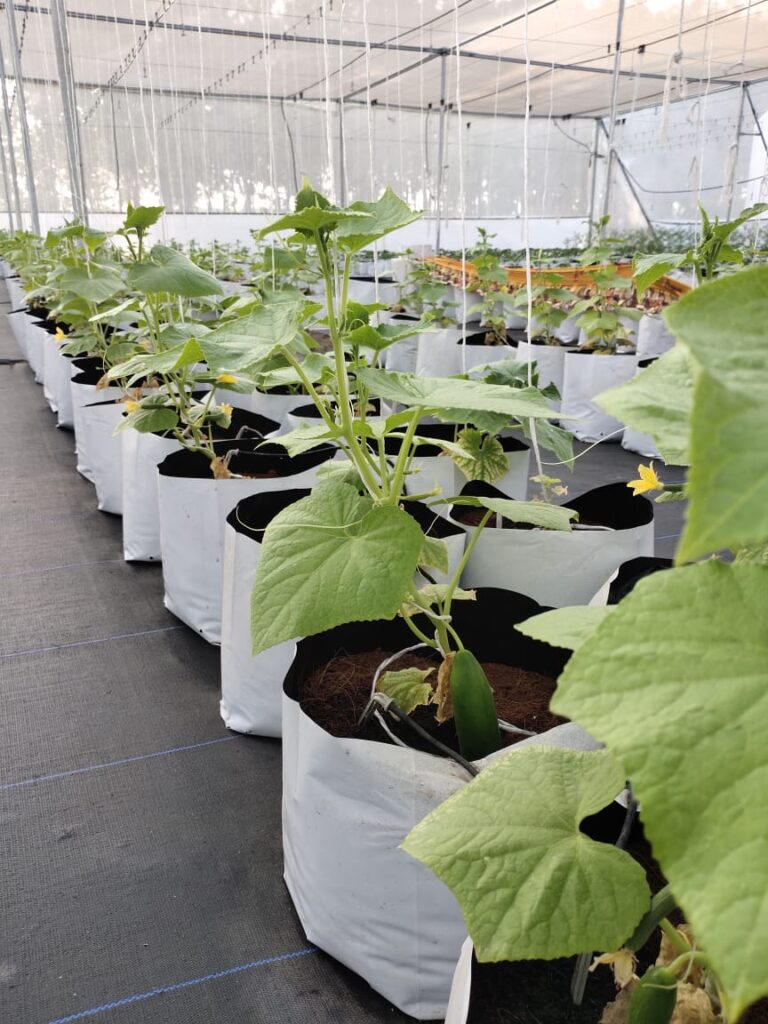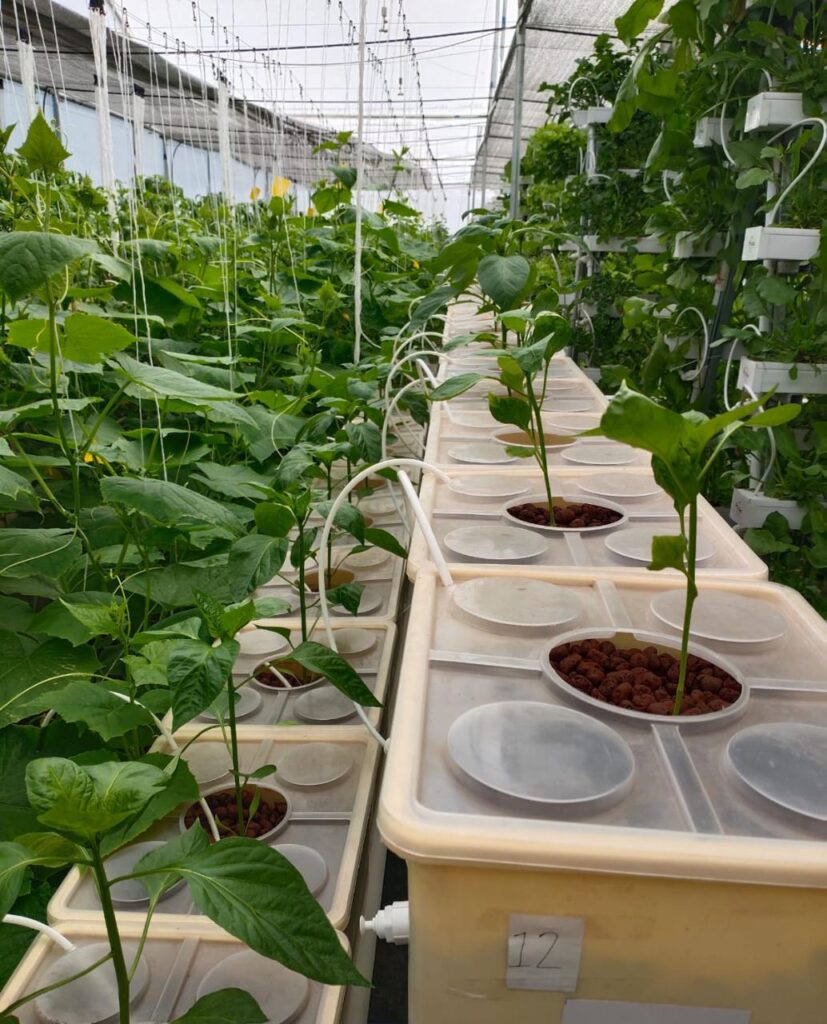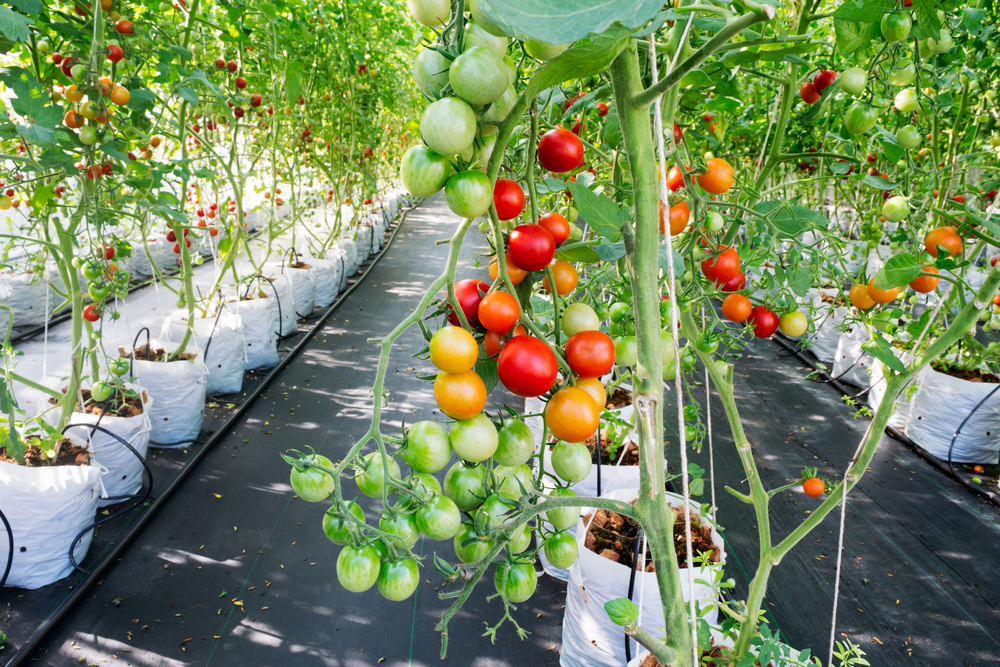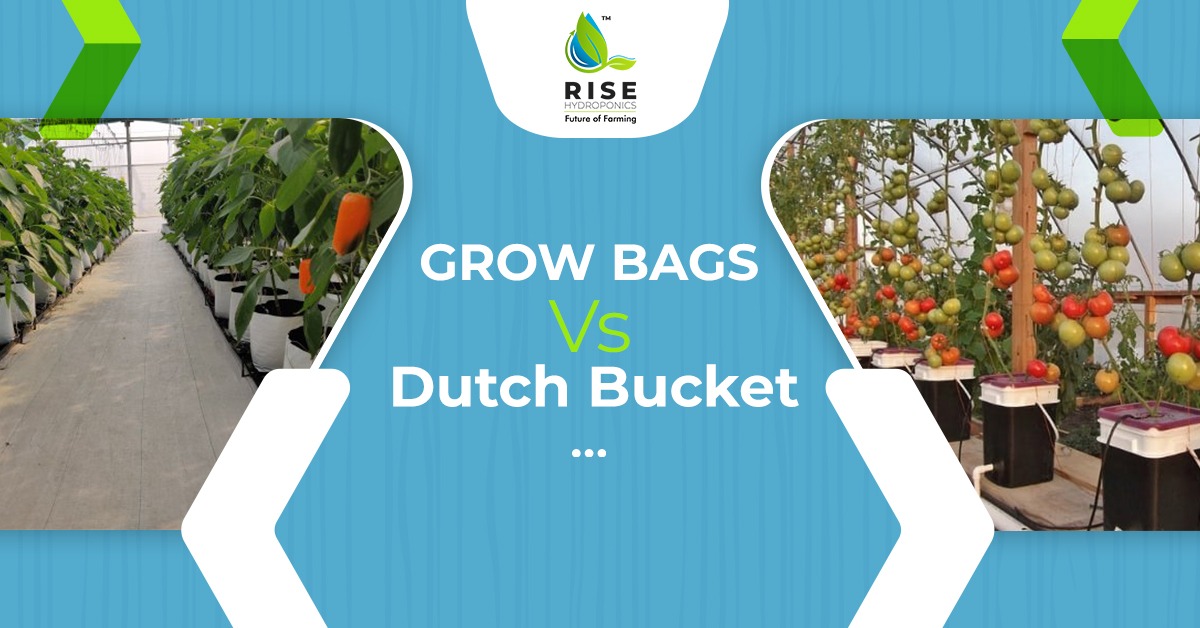Hi, all gardeners out there! Are you all set to try hydroponic farming at home? Well, this blog can help you gather great information on both grow bags and Dutch Buckets. Both these items are popular for growing plants in a hydroponics setup. Both of them are reusable, versatile, and affordable. You can use them with a wide selection of growing mediums.
Both Dutch Buckets and grow bags are invaluable assets to gardening in less than optimal or smaller spaces. But when both of these are so good, which one would you choose? This blog will help you do just that. Read on to know which one can be your best bet.
What is a grow bag?
The grow bags are those that farmers use to hold a growing medium like coco noir/ cocopeat to produce all kinds of plants. They can be made of fabric or plastic and often have handles so that you can move them. They are cheap, lighter than pots, and you can store, hang or move them quickly. They come in different sizes and materials. But, you have to change them to get a whole new set after the completion of 2-3 cycles. The grow bags range in size from 5 liters to 35 liters, which is the smallest. Thus, you must be well aware of what you will be growing before selecting a grow bag.

How grow bag is used?
To start growing fruits or veggies using grow bags in a polyhouse farming setup, here are the following things you will need:
- Water
- Growing medium (could be perlite, coconut fiber, expanded clay aggregate, vermiculite, or Rockwool)
- Nutrients
- Fertilizer
- Plants or seeds
If you are looking for a space-saving alternative, then you have to have grow bags. That is because they can be placed on a windowsill or a porch. In this post, we will tell you how to use grow bags, and to help you understand better, we will substantiate with an example. We will show you how you can grow tomatoes using grow bags.
Step 1
You have to take a typical 3-feet long grow bag that contains a slab of compressed cocopeat. That means you can grow 3-4 plants per grow bag. Since we want to grow three plants, we will make markings. Cut on the lines you made so that it flips when you open it. Also, you get a square-hole cut-out.
Step 2
The following step is to pass water through these grow bags. A submersible pump will be placed into this reservoir. This pump will pump the nutrients onto the irrigation/drip line to be dropped onto plants through drip emitters.
Step 3
For ideal drainage, make a 0.5-1 inch slit above the bags’ bottom surface. You can make 2-3 slits. It is covered on most sides; the water loss will be significantly less through the growing medium you use. You can finally transplant the seedlings from the pro tray to the bag.
Step 4
If you have not taken any form of hydroponic farming training in India, do not fret because we will tell you how to water your tomato plants. Though you can hand-water the plants for the initial weeks, it can get challenging later. Hence, we suggest installing a drip system and automating it. Here are the things you will need.
- End caps and tee joints
- Spaghetti tubes
- Drip tubes (usually 12mm)
- Reservoir
- Programmable timer
- Submersible pump
What is Dutch Bucket?
If you are a newbie to hydroponics, you may know very little about the Dutch Bucket. A Bato or Dutch bucket is a hydroponics system in which two or more growing containers are connected to the same drainage and irrigation lines. You can quickly get one from a hydroponics equipment supplier in India like Rise Hydroponics. Dutch bucket uses pipes for water supply like NFT. There will be one large reservoir/bucket that will hold nutrients and water. And, from this reservoir, the pumps will deliver nutrient water into the channels sitting at an angle.

How is it used?
Dutch buckets offer the most incredible versatility when you want to grow different kinds of plants. That is because you can use it both for aeroponic farming and hydroponics owing to its arrangement flexibility and customizable features. Building these buckets may be expensive, but they are long-lasting and you can operate them at any scale. Here is how you can install these buckets to grow fruits or veggies of your choice.
Choose a combination of perlite and hydroton to be inserted into 3-5 gallon buckets or bato buckets.
- Place plants inside the buckets and line them up in a row.
- Ensure that a water line runs from the reservoir’s water pump down the system’s length, with water channels coming off the waterline.
- The water line can constantly flow via the channels sitting at an angle. But, in the DWC system, a little bit of water is released every time to prevent the rotting or drowning of the plants.
What can be grown?

Both Dutch Bucket System and Grow bags let you grow a wide selection of fruits and veggies. You can use them to cultivate young trees or plants with deeper roots that take up more space; those include eggplants, potatoes, squashes, cucumbers, pole beans, peppers, you name it.
Most vining plants like tomatoes are commonly grown with the help of Dutch Buckets and grow bags. In fact, the grow bags and Dutch Buckets are versatile to grow compact plants as well which means shallow roots like microgreens, herbs, spinach, and lettuce, can also be grown effortlessly.
Grow bag versus Dutch bucket
Grow Bags Pros
It can be used anywhere
When you wish to expand your garden space, you can use grow bags. One of the most significant advantages of grow bags is using those spaces you once considered unusable. Thus, if you have a small balcony apartment in your balcony or want to rent a yard, go ahead with a grow bag.
Promote healthier roots
Grow Bags encourage air pruning of the roots instead of root circling. In pots, you will see that plants entangle themselves by growing in circles. This overcrowding enhances the likelihood of water stagnation and aeration issues. As a result, the roots are constricted but grow bags alleviate this problem by air pruning the roots.
Control temperature
Since grow bags are made using breathable fabric, they can shed the excess heat through this fabric, a feature that is missing in pots as plastic pots trap heat and cook your crops.
Better storage after use
Where do you store your pots when you are not using them? Admit it if they become empty eyesores stacked up in the shed or on the back porch. On the other hand, Grow bags can be folded and stored with minimal space when you are not growing anything.
Are versatile
Grow bags come in most sizes and are lightweight. They come with built-in handles; hence you can move them to different locations. You can plant them in the ground directly to prevent transplant shocks.
Watering is seamless
The grow bags are porous. They do require frequent watering, but the bag’s fabric wicks out the excess moisture if you over water.
Some bags are biodegradable
Some grow bags biodegrade, so they will break down in soil if you plant them in the ground.
Grow Bags Cons
- Some grow bags are non-biodegradable
- You will have to water the plants more frequently.
- They are not as durable as the pots. You may have to replace them every 2-3 growing seasons.
- The grow bags can get heavy. Some may even weigh over 25 pounds, and you cannot move them around in that situation.
- The grow bags have to be continuously changed every time after they complete two cycles.
Dutch Bucket Pros
- The Dutch buckets can help grow multiple large plants at once.
- They are easy to set up and do not take up much space.
- They offer less work during water changes.
- The Dutch Bucket System is long-lasting.
- This system is more accessible when you address diseases and pests with individual plants. You can remove the affected plant and plug that water channel hose.
Dutch Bucket Cons
- Pests and diseases can spread quickly
- The water channels can clog
- The Dutch Bucket System is costly.
Final Verdict
With most hydroponic systems, it gets challenging to grow large plants. However, with Dutch Bucket System, that is not the case. We feel this system is very simple and versatile, making it one of the best hydroponics farming hobbyists. Thus, all you growers out there, buy your Dutch Buckets today and grow a lot of farm produce in a small space.

